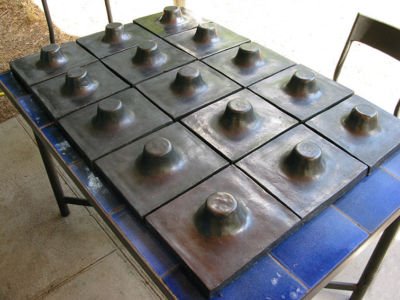Schwarz
View current page
...more recent posts
RIP Lionel Ziprin
I have never been arrested. I
have never been institutionalized.
I have four children. I am in
receipt of social security benefits.
I am not an artist. I am not an
outsider. I am a citizen of the
republic and I have remained
anonymous all the time by choice.
In The Function of Criticism, Terry Eagleton (1984) shows that contemporary literary criticism, though it is ensconced in academic domains, tends to be complicit with market forces and the ideologies that support them. He shows that contemporary literary theory, even while it is supposedly anti-authoritarian, is complicit with established structures of power by its epistemological nihilism, its social insulation, its intellectual abstraction from the affairs of everyday life, and its consequent impotence as an effectual form of social criticism. Eagleton's critique of literary theory is comparable to the Frankfurt School's critiques of scientism and positivism that charge that much of scientific inquiry is complicit with systems of domination. These critiques suggest that systems of ideas that attain prominence in intellectual or scientific worlds often tend not to unsettle, if they are not directly complicit with, established structures of power. The compliance of intellectuals with these structures is thus secured without direct coercion.
Formalist art criticism is also subject to this charge. By excluding considerations of idea content and social context, it obscured the substantive concerns that artists frequently sought to express in their works. Thus, while Piet Mondrian wrote extensively on art's role in a dialectical revelation of harmonized oppositions, for example, by reading Clement Greenberg on Mondrian we could learn no more about this than that the artist "has theories" (Greenberg, 1986: 64). Greenberg's disregard of the idea content of Mondrian's art was typical of his approach. Even in cases in which artworks, according to the extensive writings-of artists such as Mondrian (Holtzman and James, 1993) and Wassily Kandinsky (Lindsay and Vergo, 1982), were heavily invested with ideational or affective content, Greenberg evaluated such works only in terms of their formal properties. If he acknowledged the content at all, he gave it short shrift, dismissing it a priori as not pertinent to the value of art.
Bach’s birthday is celebrated on March 21st. around the globe, perhaps even in every time zone. Born fifteen years before the German states adopted the Gregorian calendar in 1700, Bach and his music get their biggest airing on this day, all calendars now properly aligned to play and pay them homage.listen
patterson and the society of usefull manufacturing
Since it seems obvious that I'll have once again to try to free "formalism" from the life-insured mortgage Greenberg has been granted on its very premises,(2) I'll first take his work as an example in order to assert that, notwithstanding what he had to say on the matter (he and several Bloomsbury writers such as Roger Fry and Clive Bell who shared such a silly dream), it is impossible to keep meaning at bay. Then I'll use his work to show that if "formalist criticism" currently has a bad name, it may be because it was not practiced well enough. This will lead me to respond to the charge that formalism equals a- or antihistory (a charge common since the days of Stalin's cultural commissar Andrei Zhdanov and carried to the present: it is the main argument of the "business-as-usual" critic quoted above). All along, I shall try to define the tasks of the type of formalism I have in mind with regard to the practice of its most vociferous enemies.
A word on these enemies, in passing: although they come from different factions, they share an idealist conception of meaning as an a priori construct existing before its embodiment in a form. They all speak, as Roland Barthes would say, "in the name of the Cause." Their idealist conception of meaning combines with an idealist conception of form (as existing prior to its embodiment in matter) in order to insure the apotheosis of the concept of image - an apotheosis whose current symptom is the rise of what is called Visual Studies. It is not by chance that the image was precisely what abstract art struggled against, or that it has been the main target of the Russian formalists in their literary criticism, or that Riegl's groundwork concerned essentially nonmimetic decorative arts, for in the absence of the image one is, or should be, forced to abandon the idealist concept of meaning I just mentioned. The enemies of formalism usually keep away from abstract art for that very reason - but when they occasionally approach it, it is most often in a desperate attempt to retrieve the absent image (business as usual) and thus to negate the historical specificity of abstraction.
With the new century come two new building types: the dead superstore and the dead mall. The dead mall is a victim of economic chill. But dead out-of-town superstores are something else. They're like old skins shucked off by saurian retailers as they gobble up sites and pursue unending growth.
Julia Christensen's book Big Box Reuse examines the lifecycle of these creatures, the far-reaching transformations they bring about in towns and cities, and the waste structures they leave behind. Her research is valuable and timely - the unexpected bonus is that the story is fascinating and lucidly written. When a big box superstore moves into a city, or (as is more common) appears on its periphery, it gives that city a new economic centre of gravity. The sales tax that it raises means that local authorities bend to its will. The thousands of car journeys that it generates can attract other businesses to set up next door. And the fabric of the city warps around it: freeway exits are built, turning lanes implemented.

george jouve tiles
